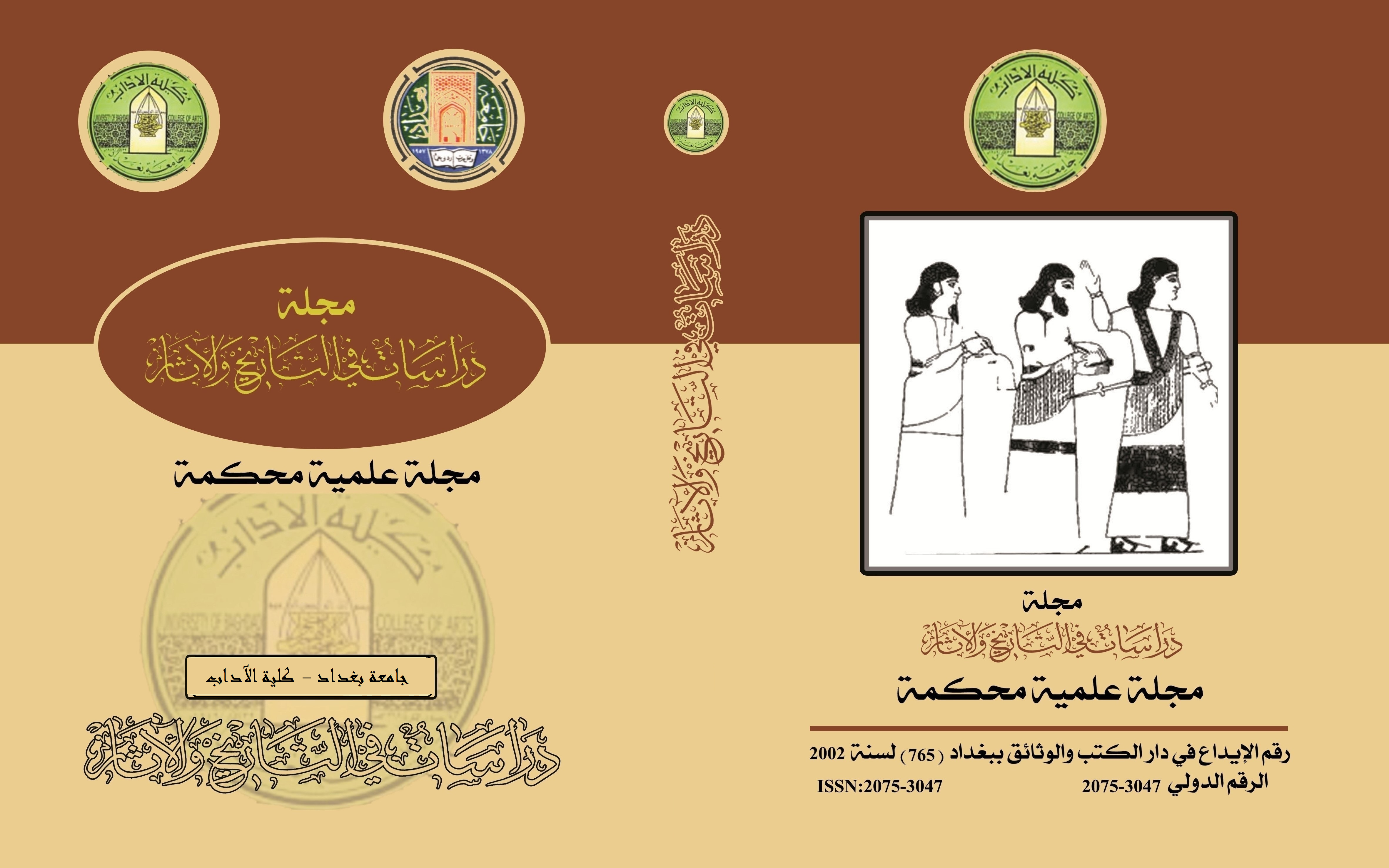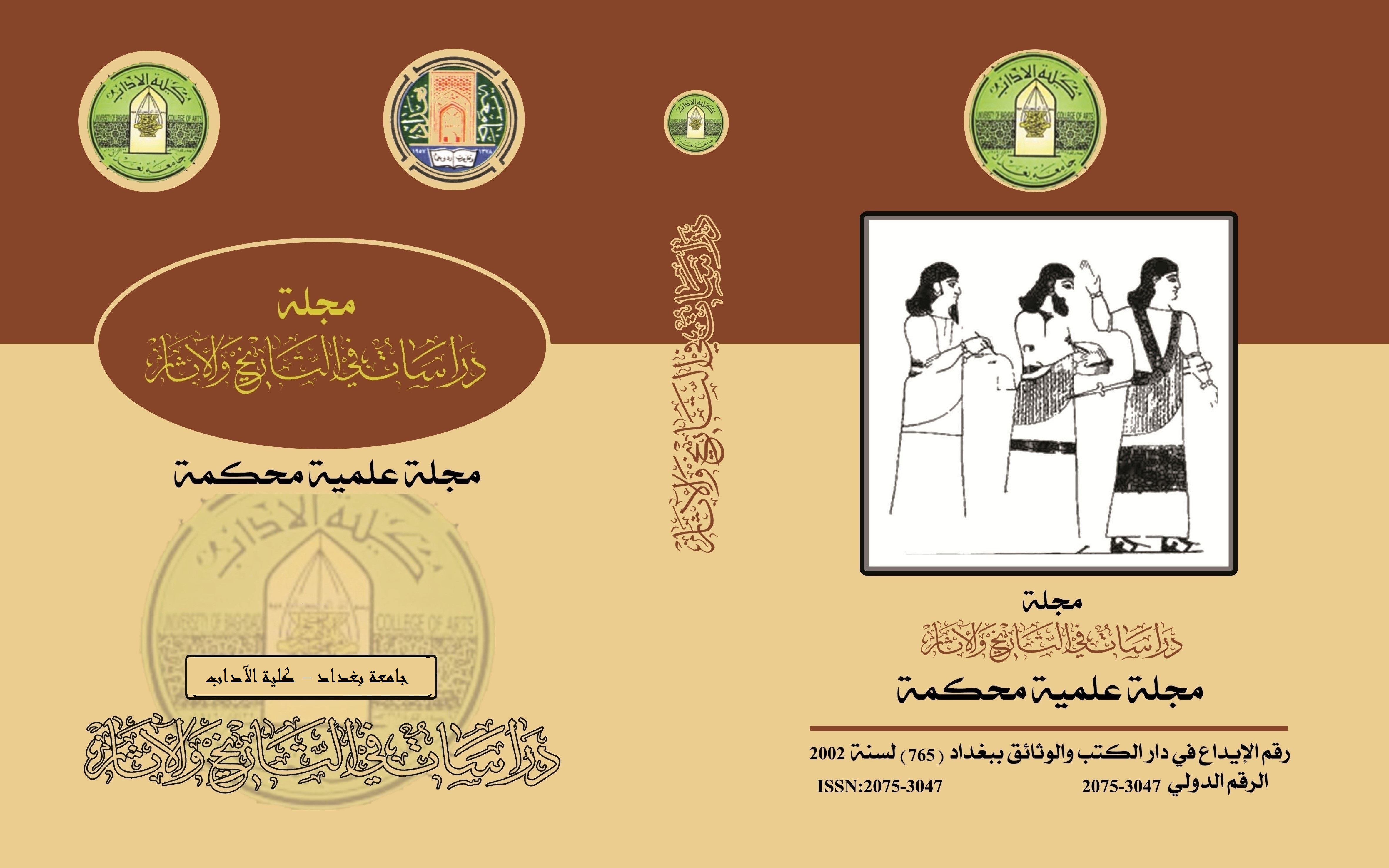الزخارف الحيوانية والمركبة في السجاد الاسلامي
الكلمات المفتاحية:
السجاد، الاثار، الزخارفالملخص
يتناول هذا البحث أهمية الزخارف الحيوانية الخرافية في الفن الإسلامي، مع التركيز على تصميمات السجاد كأحد أهم أشكال الفنون الزخرفية. يستعرض البحث تطور هذه الزخارف عبر العصور وتأثرها بالعديد من الحضارات، مثل الفارسية والبيزنطية والصينية، والتي أسهمت بشكل كبير في تشكيل الهوية الفنية الإسلامية. ويوضح البحث كيف استخدم الفنانون المسلمون أساليب التحوير والتجريد لتجنب محاكاة الكائنات الحية الحقيقية، بما يتماشى مع المبادئ الدينية، ما أدى إلى ابتكار تصاميم فريدة تعكس الإبداع والتفرد. كان لهذه الزخارف الحيوانية أدوار مختلفة، منها ما كان يعبر عن القوة والحماية مثل صور التنين، أو رمزًا للحكمة والخير مثل العنقاء، أو حتى رمزية دينية كما في بعض الزخارف التي تظهر الأسد أو الحصان المجنح. وقد شكلت هذه العناصر الفنية جزءًا من الثقافة الإسلامية، حيث انتشرت في جميع أنحاء العالم الإسلامي، بدءًا من إيران وتركيا والهند وحتى بلاد القوقاز والأندلس.
يركز البحث أيضًا على تحليل تقنيات النسج التي استخدمت في صناعة السجاد ذي الزخارف الحيوانية المركبة، مع الأخذ بعين الاعتبار التطورات التي شهدتها هذه التقنيات عبر الحقب الزمنية المختلفة. كما يسلط البحث الضوء على المدارس الفنية المختلفة التي ساهمت في تطوير هذه الفنون، مثل المدرسة الصفوية التي اشتهرت بإدخال تفاصيل دقيقة إلى الزخارف، والمدرسة العثمانية التي اعتمدت على الزخارف الهندسية مع التحوير في الأشكال الطبيعية.
كما يبحث البحث في أهمية الحفاظ على هذا الإرث الفني المميز الذي يمثل تفاعلًا حضاريًا وثقافيًا بين مختلف الشعوب. فقد كان السجاد الإسلامي ولا يزال من أبرز الفنون الزخرفية التي تعكس القيم الجمالية والروحية للمجتمعات الإسلامية. ومع تطور العصر الحديث، أصبح هناك تحديات كبيرة تواجه هذا الفن، مثل الابتعاد عن الأساليب التقليدية لصالح الإنتاج الصناعي، وفقدان بعض التقنيات الحرفية التي كانت متوارثة عبر الأجيال. لذلك، يدعو البحث إلى ضرورة الحفاظ على هذا التراث الثقافي، ودعم الحرفيين التقليديين الذين ما زالوا يبدعون في هذا المجال.
المراجع
1. الازرقي : أخبار مكة وما جاء فيها من الاثار، تحقيق رشدي الصالح، ط2، مكة المكرمة، 1965، ج1.
2. الحداد ، عبد الله عبد السلام : مقدمة في الاثار الاسلامية ، جامعة صنعاء ، دار الشوكاني للطباعة ، 2003، ط1 .
3. الحداد، محمد حمزة: المجمل في الفنون والعمارة، لوحة 328/لوحة 86 في رسالة محمد أحمد السجاد الهندي.
4. حاتم، عماد: أساطير اليونان، الدار العربية، ليبيا – طرابلس، 1988.
5. حميد ، عبد العزيز: السجاد الشرقي وتطوره حتى اواخر القرن العشرين، دار الكتب العلمية، بيروت -لبنان ، 2022.
6. حسن ، زكي محمد : اطلس الفنون الزخرفية .
7. خليفة ، ربيع حامد : فن التصوير عند الاتراك الاويغور واثره على التصوير الاسلامي ، كلية الاثار ، جامعة القاهرة ، ط1 ، القاهرة ، 1996.
8. دحدوح ، باسم: "التصوير عند العرب والمسلمين بين الاباحة والتحريم في العصور الوسطى " ، مجلة جامعة دمشق للعلوم الهندسية ، مجلد 26، عدد1، 2010.
9. ديماند ، م . س : الفنون الاسلامية ، دار المعارف ، القاهرة ، غير مؤرخ .
10. السعدي، سيماء: الطنفس في خزان العتبتين الحسينية والعباسية، أطروحة دكتوراه، جامعة بغداد، 2013.
11. السراج، مي عبد المنعم: الزخرفة والتصاوير على التحف المعدنية في العراق خلال العصور الاسلامية حتى نهاية العصر العثماني، بغداد، 2012.
12. سومر وحضارتها وفنونها.
13. شاك، فون: الفن العربي في اسبانيا وصقلية، ترجمة أحمد مكي، دار المعارف، القاهرة، 1980، ط2.
14. شريقي، زكريا: الفن العربي الاسلامي الجذور والمؤثرات، سوريا، 2012.
15. الصبيحاوي، فرحان: "الرمزية في الفن الاسلامي"، مجلة دراسات في التاريخ والاثار، عدد 67 كانون الاول، 2018.
16. الطبراني ، ابو القاسم سليمان بن احمد: المعجم الكبير ، تحقيق حمدي عبد المجيد السلفي ، ط2، العراق ، الموصل ، 1986، ج12.
17. عصام، عبد الرؤوف الفقي: بلاد الهند في العصر الاسلامي منذ فجر الاسلام وحتى التقسيم، دار الفكر العربي، 2002، ط2.
18. عبد الجواد، توفيق حمد: العمارة الاسلامية فكر وحضارة، 1987.
19. عبد الحافظ، عبد الله عطية: الاثار والفنون الاسلامية، القاهرة، 2005.
20. عبده، مصطفى: المدخل الى فلسفة الجمال.
21. عكاشة ، ثروت : التصوير الاسلامي ، ط1 ، بيروت 1977.
22. عرابي ، اسعد : معنى الحداثة في اللوحة العربية ، ص52.
23. العميسي ، فضل محمد : التجسيدات الحيوانية على الاثار في جنوب غرب الجزيرة العربية ( اليمن) قبل الاسلام ،اطروحة دكتوراه في الادب تخصص اثار ما قبل الاسلام ، 2012- 2013.
24. كاتبي، شيلار: الفن الاسلامي، ترجمة حازم نهار، ط1، أبو ظبي، 2013.
25. كول، ارنست: الفن الاسلامي، ترجمة أحمد موسى.
26. الكتاب المقدس ، نداء الرجاء ، سفر الخروج ، شتوفارت ، المانيا ، 1993 ، الاصحاح العشرون ، الاية 4و5 ، ص117. نقلا عن : عبد الرحمن، محمود حسين : تأثيرات الفن الاسلامي في الرسم الاوربي الحديث ، رسالة ماجستير غير منشورة مقدمة الى كلية الفنون الجميلة ، بغداد 2003.
27. مرزوق، محمد عبد العزيز: الفنون الزخرفية الاسلامية في مصر قبل الفاطميين، القاهرة، 1974.
28. ماهر، سعاد: الفن الاسلامي.
29. محمد، محمد أحمد: السجاد الهندي المغولي من خلال التحف الباقية وتصاوير المدرسة المغولية الهندية، رسالة ماجستير، جامعة حلوان، مجلد 1، 2013.
30. مرزوق، محمد عبد العزيز : الفنون الزخرفية الاسلامية في مصر قبل الفاطميين ، القاهرة 1974 .
31. هارتمان، مايكل: الروائع الفنية الاسلامية، ط1، بيروت، 2001.
المصادر الاجنبية:
Daneil, s., Walker, oriental rugs of the hajii babas ,network in association with sothebys ,s.d.
Stone, p.f.,the oriental rug lexicon, Washington, 1997.
Eedmann,K., orientalische tierteppiche auf bildern des XIVand XV jahrhunderts , jahrbuch der preussischen kunstammilungen, Berlin, 1929.
التنزيلات
منشور
إصدار
القسم
الرخصة

هذا العمل مرخص بموجب Creative Commons Attribution 4.0 International License.
:حقوق الطبع والنشر والترخيص
بالنسبة لجميع البحوث المنشورة في مجلة دراسات في التاريخ والآثار، يحتفظ الباحثون بحقوق النشر. يتم ترخيص البحوث بموجب ترخيص Creative Commons CC BY 4.0 المفتوح ، مما يعني أنه يجوز لأي شخص تنزيل البحث وقراءته مجانًا. بالإضافة إلى ذلك ، يجوز إعادة استخدام البحث واقتباسه شريطة أن يتم الاستشهاد المصدر المنشور الأصلي. تتيح هذه الشروط الاستخدام الأقصى لعمل الباحث وعرضه.
:إعادة إنتاج البحوث المنشورة من الناشرين الآخرين
من الضروري للغاية أن يحصل الباحثون على إذن لإعادة إنتاج أي بحث منشورة (أشكال أو مخططات أو جداول أو أي مقتطفات من نص) لا يدخل في نطاق الملكية العامة أو لا يملكون حقوق نشرها. يجب أن يطلب الباحثون إذنًا من مؤلف حقوق النشر (عادة ما يكون الناشر).
يطلب الإذن في الحالات التالية:
بحوثك الخاصة المنشورة من قِبل ناشرين آخرين ولم تحتفظ بحقوق النشر الخاصة بها.
مقتطفات كبيرة من بحوث أي شخص أو سلسلة من البحوث المنشورة.
استخدم الجداول والرسوم البيانية والمخططات والمخططات والأعمال الفنية إذا لم يتم التعديل عليها.
الصور الفوتوغرافية التي لا تملك حقوق لنشرها.
لا يطلب الإذن في الحالات التالية:
إعادة بناء الجدول الخاص بك مع البيانات المنشورة بالفعل في مكان آخر. يرجى ملاحظة أنه في هذه الحالة يجب عليك ذكر مصدر البيانات في شكل "بيانات من ..." أو "مقتبس من ...".
تعتبر عروض الأسعار القصيرة معقولة الاستخدام العادل ، وبالتالي لا تتطلب إذنًا.
الرسوم البيانية ، الرسوم البيانية ، المخططات ، الأعمال الفنية التي أعاد الباحث رسمها بالكامل والتي تم تغييرها بشكل ملحوظ إلى درجة لا تتطلب الاعتراف.
الحصول على إذن
لتجنب التأخير غير الضروري في عملية النشر ، يجب أن تبدأ في الحصول على أذونات في أقرب وقت ممكن. لا يمكن لمجلة الآداب نشر بحث مقتبس من منشورات أخرى دون إذن.
قد يمنحك مالك حقوق الطبع والنشر تعليمات بشأن شكل الإقرار الواجب اتباعه لتوثيق عمله ؛ بخلاف ذلك ، اتبع النمط: "مستنسخ بإذن من [المؤلف] ، [كتاب / المجلة] ؛ نشره [الناشر] ، [السنة]." في نهاية شرح الجدول ، الشكل أو المخطط.



















